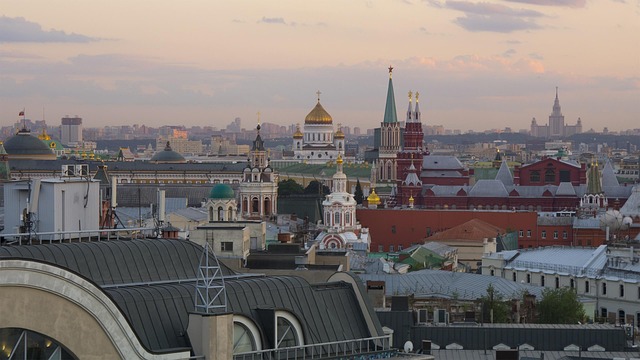Prefab roofing solutions are a game-changer in construction, offering energy efficiency, cost savings, and superior quality. Manufactured off-site with insulated panels, these systems provide optimal thermal performance, reducing heating/cooling costs. Their durability and weather resistance safeguard buildings' structural integrity. Insulation plays a crucial role by minimizing heat transfer, improving temperature control, and lowering utility bills. The installation process involves precision manufacturing, sealing, alignment, and protective membranes for long-lasting protection. Prefab roofing is an eco-friendly choice with a smaller carbon footprint, aligning with sustainable building practices.
“Discover the transformative power of insulated prefab roofing solutions for enhancing energy efficiency. This comprehensive guide explores how these innovative systems are reshaping the construction industry. From understanding the basics of prefab roofing to delving into the science behind insulation, we uncover the advantages for both homeowners and the environment.
Learn about the seamless installation process, best practices, and the long-term financial and ecological benefits that make insulated prefab roofs a smart choice.”
Understanding Prefab Roofing and Its Benefits
Prefab roofing solutions have gained significant traction in the construction industry for their energy efficiency and cost-effectiveness. These innovative systems are created off-site in a controlled environment, ensuring higher quality control and faster installation compared to traditional roofing methods. Prefab roofing offers numerous benefits, including improved insulation, reduced heat transfer, and lower energy consumption, making them an attractive option for both residential and commercial buildings.
By utilizing insulated prefab panels, builders can achieve superior thermal performance, resulting in well-regulated indoor temperatures throughout the year. This not only reduces the reliance on heating or cooling systems but also contributes to significant long-term savings on energy bills. Moreover, prefab roofing solutions are known for their durability and ability to withstand harsh weather conditions, ensuring the structural integrity of a building and providing peace of mind for homeowners and businesses alike.
The Role of Insulation in Energy Efficiency
Insulation plays a pivotal role in enhancing the energy efficiency of any building, and prefab roofing solutions are no exception. By incorporating insulated materials into prefab roofs, structures can significantly reduce heat transfer, leading to better temperature control and lower energy consumption for heating and cooling systems. This is especially beneficial in extreme weather conditions, where proper insulation acts as a barrier, preventing heat loss during winters and heat gain during summers.
Prefab roofing with insulation creates an effective thermal envelope, improving the overall energy performance of the building. Modern insulated prefab roofing materials are designed to provide excellent R-values, which measure a material’s resistance to heat flow. This ensures that the interior remains comfortable while minimizing the environmental impact by reducing the carbon footprint associated with excessive energy usage for temperature regulation.
Advantages of Insulated Prefab Roofing Systems
Insulated prefab roofing systems offer a multitude of advantages for both residential and commercial buildings. One of the primary benefits is their superior energy efficiency. The insulation layer in these systems acts as a barrier, preventing heat transfer between the interior and exterior of the building. This significantly reduces energy consumption for heating and cooling, leading to lower utility bills and a smaller carbon footprint.
Moreover, prefab roofing solutions provide excellent structural integrity and durability. These systems are designed off-site in a controlled environment, ensuring precise manufacturing and high-quality materials. Once installed, they offer long-lasting protection against the elements, including intense sunlight, heavy rainfall, and strong winds. This longevity not only saves on replacement costs but also contributes to the overall sustainability of the building.
Installation Process and Best Practices
The installation process for insulated prefab roofing involves several key steps. First, the roof structure is assembled off-site in a controlled environment, ensuring precision and quality. Once ready, it’s transported to the job site and carefully placed on top of the existing structure. The insulation layer is then added, providing an efficient barrier against heat transfer. This step is crucial for energy efficiency as it helps maintain indoor temperatures, reducing the load on HVAC systems. Finally, a protective membrane or finish coats are applied to seal the roof, enhancing durability and water resistance.
Best practices dictate that proper sealing and insulation alignment be maintained throughout installation. All joints and seams should be meticulously sealed to prevent air leakage. Using high-quality insulation materials with the recommended R-values ensures optimal thermal performance. Additionally, regular maintenance checks post-installation are vital to detect any potential issues early on. This includes inspecting for loose panels, damaged insulation, or signs of water intrusion, ensuring the prefab roofing solution continues to serve its energy-efficient purpose over time.
Long-Term Savings and Environmental Impact
Insulated prefab roofing offers more than just energy efficiency; it’s a long-term investment that translates to significant savings. By reducing heat transfer, these roofing solutions mitigate the need for excessive heating and cooling, lowering utility bills over time. This longevity also extends to the environmental impact. Prefab roofing materials are designed with sustainability in mind, often using recycled content and requiring less energy during manufacturing compared to traditional roofing options. Furthermore, by minimizing waste and streamlining installation processes, prefab roofing solutions contribute to a reduced carbon footprint, making them an eco-friendly choice for both homeowners and commercial properties.
Insulated prefab roofing offers a compelling solution for energy-efficient homes and buildings. By combining the speed and cost-effectiveness of prefabrication with enhanced insulation, these systems significantly reduce energy consumption and provide long-term savings. As we look towards more sustainable building practices, prefab roofing solutions play a vital role in minimizing environmental impact while delivering superior comfort and performance.
